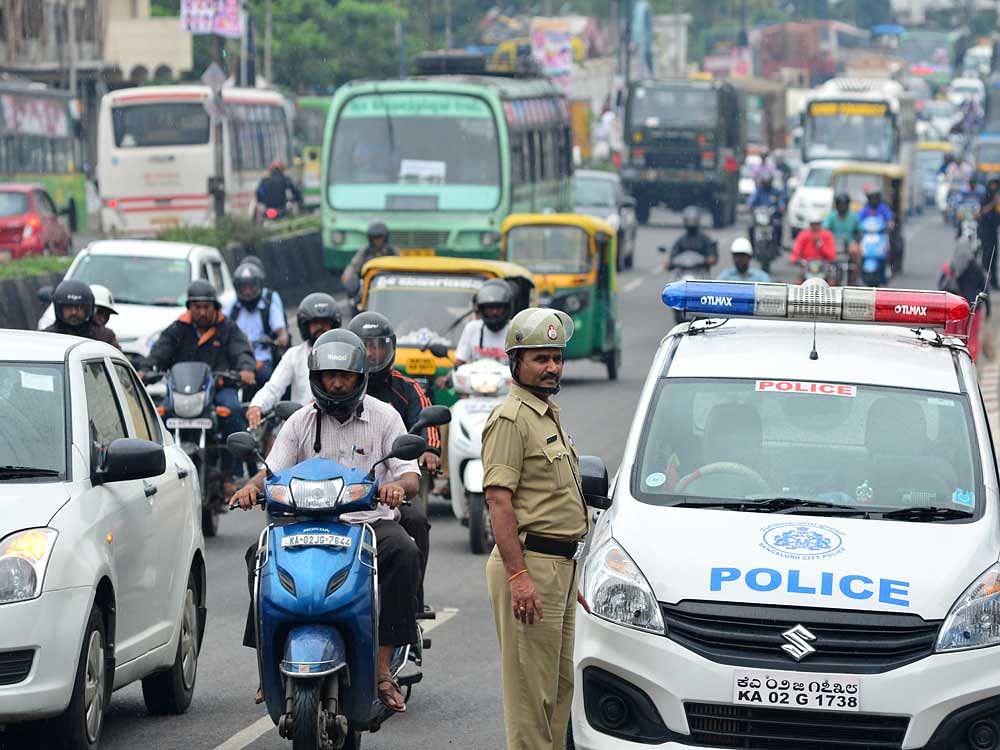According to a survey conducted by the Centre for Science and Education (CSE), Bengaluru is ranked third in overall emissions and energy consumption. Chennai and Hyderabad are also among the top five 'most polluted cities' list.
The report titled- 'The Urban Commute and how it contributes to Pollution and Energy Consumption' released in Kolkata on Friday, revealed that the emission levels in Bengaluru, Chennai and Hyderabad are going the Delhi way. Delhi remains the most polluted city in India.
Bhopal emerged a dark horse as the best city in terms of (low) emissions. Chennai stood second and Hyderabad fourth, in high emission and energy consumption. Kolkata ranked eighth.
Per travel trip emissions
On the ranking index by per travel trip emissions and energy consumption, Bengaluru ranked fourth. Kolkota ranked best (highest). Hyderabad ranked the lowest. Chandigarh stood second; followed by Kochi. Chennai ranked fifth.
14 cities studied
CSE assessed 14 Indian cities. They included Delhi, Mumbai, Kolkata, Chennai, Bengaluru, Hyderabad, Ahmedabad, Pune, Jaipur, Lucknow, Kochi, Bhopal, Vijayawada and Chandigarh.
The survey was carried out on the basis of emissions of heat-trapping carbon dioxide, toxic pollutants, particulate matter and nitrogen dioxide due to urban commute.
The CSE, on the occasion, also released the report- 'Reducing Footprints- A Guidance Framework for Clean and Low Carbon Transport in Kolkata'.
Megacities worsen
According to the CSE report, megacities like Bengaluru, Hyderabad and Chennai scored poorly as they have a low share of public transport (compared to Delhi).
Yet, they scored better than Delhi only because the total travel volumes are comparatively lower-- given their population levels. With unprecedented growth and absence of adequate action, they could get worse in future, the report predicted.
Anumita Roychowdhury, Executive Director and Research and Advocacy, CSE, told DH that this ranking proves that for clean and low carbon mobility, cities need policies to stop urban sprawl.
"They need to reduce distances between home and job; recreate compact urban forms; scale up integrated public transport, promote walking & cycling, and restrain using personal vehicles. There is a need to avert pollution and climate crises," she added.
Road transport main culprit
The report also highlighted that road transport was one of the largest polluters in cities. Presently road transport ranks third. Industrial growth tops the list and agricultural growth ranks second. The growth of buildings ranks fourth on the list of causes.
The CSE report showed that Bhopal tops in the (lowest) overall emission and energy use from the urban commute. Bhopal has taken early action to improve its public transport (city bus system) and its high share of personal vehicle trips has not eroded the advantage of its compactness and low vehicle miles travelled.
Kolkata and Mumbai emit least among the six megacities due to high usage of public transport and walking. Kolkota also has short travel distances due to its compact form. But this is not the case with Bengaluru, the report stated.
Smaller metros at inflection point
The report also showed that Ahmedabad, Lucknow, Vijayawada, Pune and Jaipur were at crossroads and inflection points. Their per trip emissions are in the middle of the spectrum. Depending on what direction their mobility policies take over the next few years, their pollution levels may increase or decrease.
Bhargab Maitra, Professor, Department of Civil engineering, IIT Kharagpur, said that the department was working on innovation for urban indigenous technologies like electric mobility. He pointed out that most Indian cities were not planned and are already structurally developed. "The policymaking is slower than the increase in vehicular mobility," he added.
Explosive motorisation
It had taken 60 years – from 1952 to 2008 – for the number of registered vehicles in the country to reach 105 million.
Since then, nearly the same number was added in just six years – between 2009 and 2015.
Simultaneously, travel on public transport is expected to decrease from 75.5 per cent in 2000-2001; to 44.7 per cent by 2030-2031.
The 14 cities studied include megacities like Delhi, Mumbai, Kolkata, Chennai, Bengaluru and Hyderabad. And metropolitan cities like Ahmedabad, Pune, Jaipur, Lucknow, Kochi, Bhopal, Vijayawada and Chandigarh.
RANKINGS
(Overall emissions and energy consumption)
Bhopal
Vijayawada
Chandigarh
Lucknow
Kochi
Jaipur
Kolkata
Ahmedabad
Pune
Mumbai
Hyderabad
Bengaluru
Chennai
Delhi
(Per-travel trip emissions and energy consumption)
Kolkata
Mumbai
Bhopal
Delhi
Ahmedabad
Lucknow
Vijayawada
Pune
Jaipur
Chennai
Bengaluru
Kochi
Chandigarh
Hyderabad
